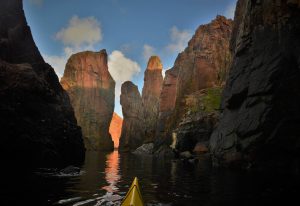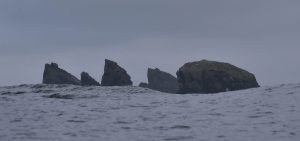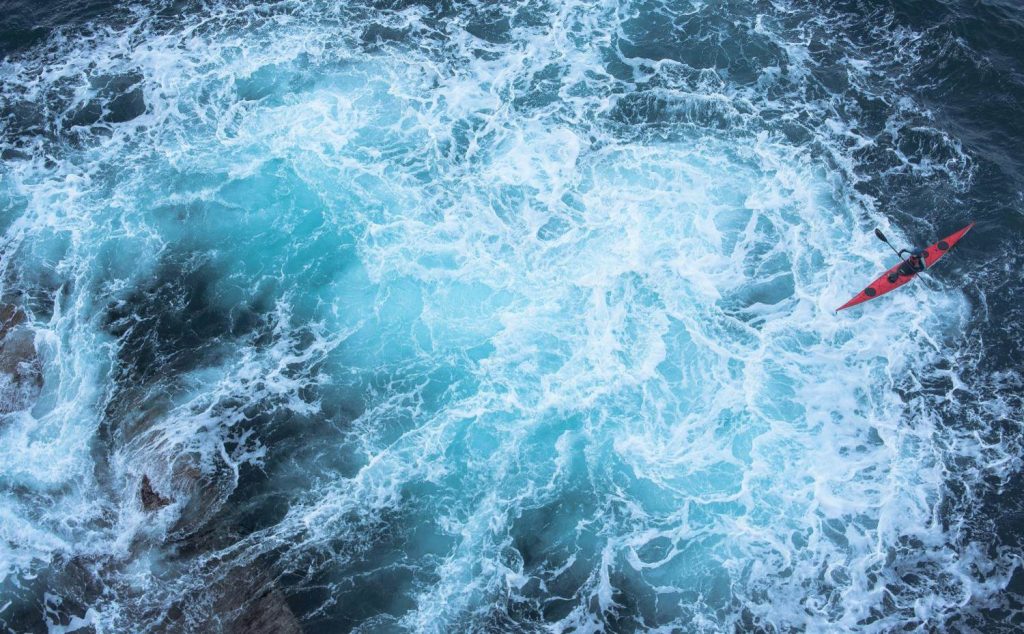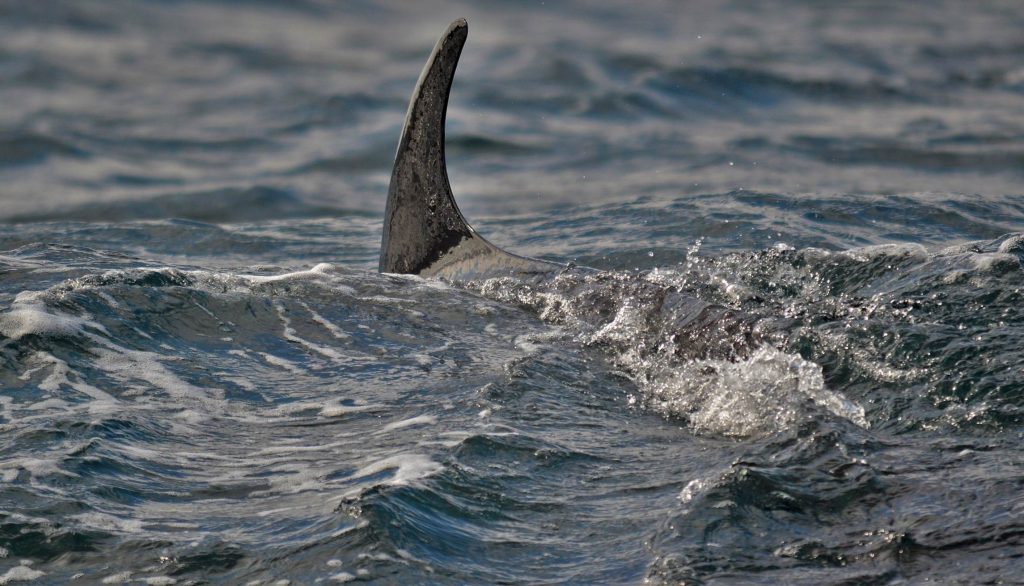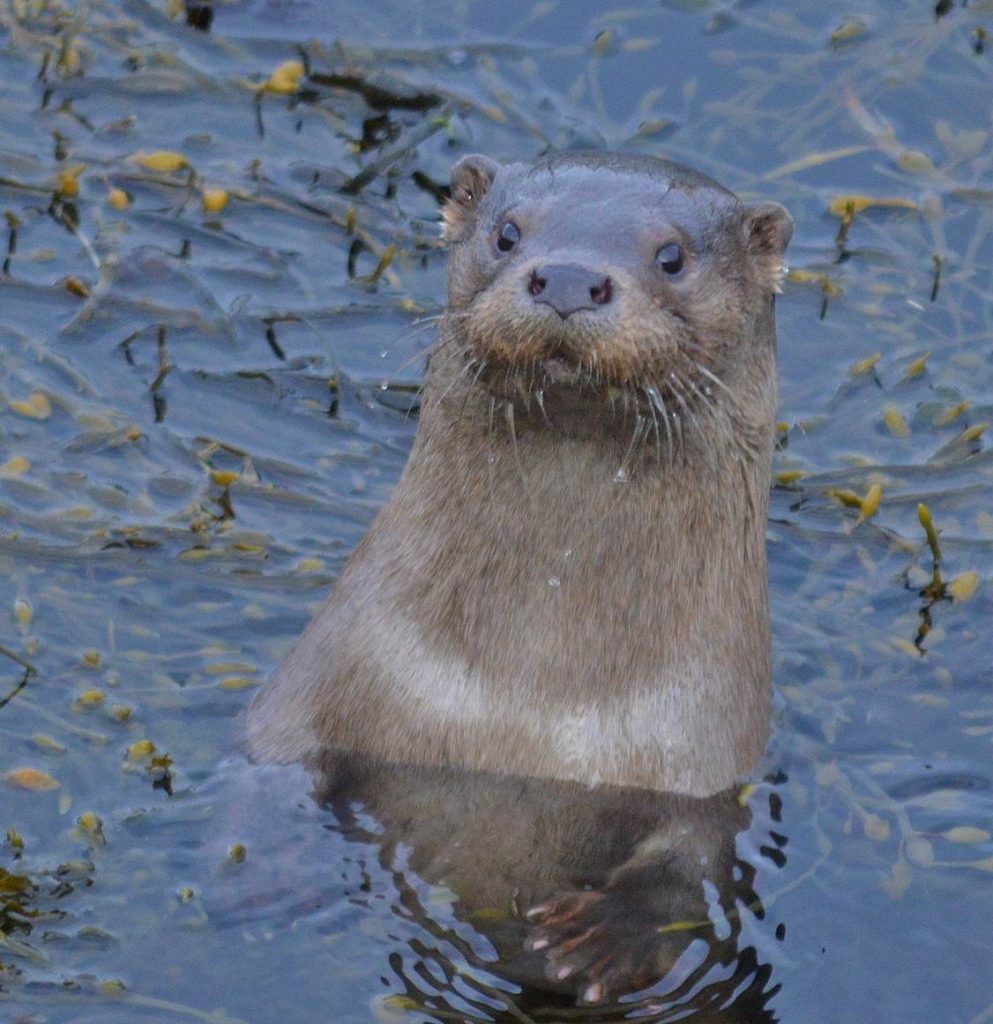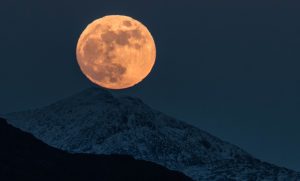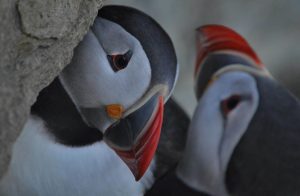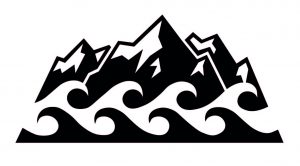 The idea that the geographies of Britain and Ireland have been transformed by the histories of the last two centuries is so obvious as to be commonplace. But the scale and implications of the transformation can still be surprising and disorienting. This is especially true where the relations of land and water are concerned. From being a medium of communication and exchange water has become a barrier to be drained, bridged or driven round. Things that would once have seemed miraculous – such as instantaneous communication across the globe – seem ordinary, while things that would once have been ordinary – such as crossing stretches of wild sea in tiny boats – can seem miraculous. An underappreciated element of modern life has been the drying out of land, life and even imagination.
The idea that the geographies of Britain and Ireland have been transformed by the histories of the last two centuries is so obvious as to be commonplace. But the scale and implications of the transformation can still be surprising and disorienting. This is especially true where the relations of land and water are concerned. From being a medium of communication and exchange water has become a barrier to be drained, bridged or driven round. Things that would once have seemed miraculous – such as instantaneous communication across the globe – seem ordinary, while things that would once have been ordinary – such as crossing stretches of wild sea in tiny boats – can seem miraculous. An underappreciated element of modern life has been the drying out of land, life and even imagination.
Many of the most celebrated developments of the era – such as the processes collated under the term ‘Enlightenment’, the push towards agricultural improvement, or the education acts of the 1870s – were disasters for the waterier regions of Britain. The western seaboard, in particular, featured many places which, while the demography of most of Britain boomed, were reduced to their lowest populations since prehistory. The richness and diversity of the cultures and languages of the British and Irish islands was threatened as a result. These regions thus followed trajectories very different from those usually associated with ‘modernity’ and seeing British and Irish histories from their perspective challenges – even reverses – many of the most familiar narratives of modern history.
My research in 2016 and 17 was an attempt to make sense of some of the diversity of British and Irish histories by travelling the Atlantic coastlines, from the strange geographies of Shetland in the north…
…via the west of Ireland…
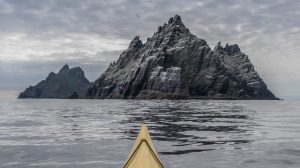
…to Cornwall in the South.
I did this in a sea kayak: a boat 17 ft long and 3 ft wide that can cut through heavy seas and hold the resources for several weeks of unbroken travel.
And a couple of the close encounters that always accompany travel in these boats:
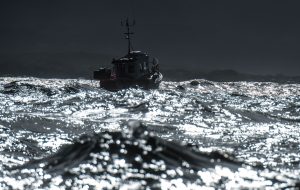
The journey combined several kinds of research. The first focused on the experience of travel by small boat. Negotiating tides and weather was an important experiential link to the everyday lives of past people. This involved aligning my experience with testimony in the archives, including records of how people learned to read and predict their fickle local tides. And I had many enlightening conversations with fishermen in small boats, miles out at sea.
Part of the experience was about learning to see the shoreline and its creatures as people from the past had seen them. These coastlines are riddled with remnants of lost industries. When I landed on a small rock called Aikerness Holm (populated only by seals and hundreds of miles from anything that might constitute a city) I found a single stone building like a crude garden shed:
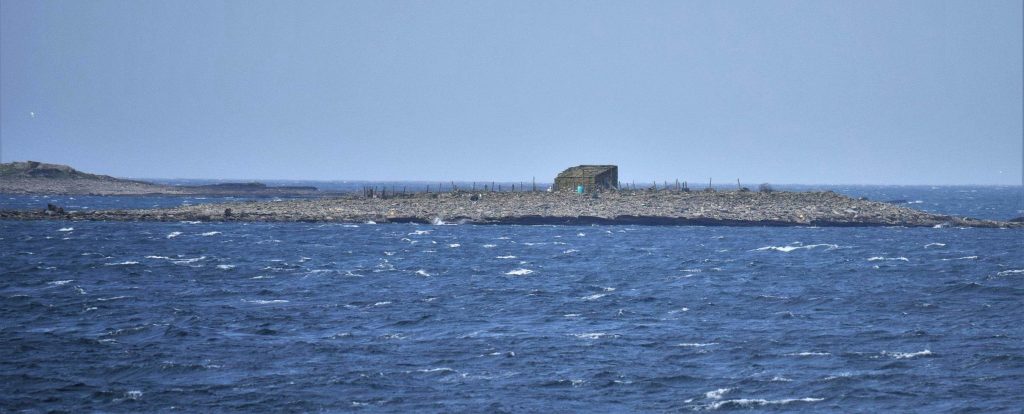 Today this would be cramped conditions for one, but in the nineteenth century four or five men would spend each week through summer living here and collecting seaweed that would then be burnt to make an alkali, used to make soap and glass in southern urban industries, sending huge palls of blue-brown smoke across the neighbouring islands. Aikerness Holm was as central to industrialisation as Birmingham or Coalbrookdale. And the lives of those who worked here could be pieced together through the archive on the neighbouring isle of Westray.
Today this would be cramped conditions for one, but in the nineteenth century four or five men would spend each week through summer living here and collecting seaweed that would then be burnt to make an alkali, used to make soap and glass in southern urban industries, sending huge palls of blue-brown smoke across the neighbouring islands. Aikerness Holm was as central to industrialisation as Birmingham or Coalbrookdale. And the lives of those who worked here could be pieced together through the archive on the neighbouring isle of Westray.
My nights were spent on the shoreline in a waterproof sleeping bag, sometimes amongst the ruins I’d later research…

…and sometimes among the seabirds and animals that had been crucial resources for past people:
One coast dweller whose words were recorded in the Orkney archive described the bounty of these cliffs I kayaked beneath:
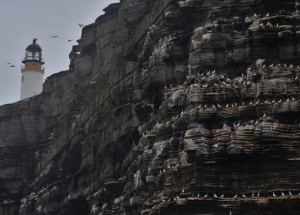
The guillemots that came here, they still come here…you’ll no get any more here unless you build more cliffs because the cliffs are full of them…It was always a great source of food for the old folk you see. No expense, you didna have any vets bills or anything…you know it is very dark coloured flesh that’s in them…sometimes they were just stewed but usually they were just boiled, you know boiled until the flesh fell off the bones, fried up with onions.
We used to eat eider ducks more than guillemots because there were more eider ducks in our area…and cormorants was better still, especially the brown ones, the juvenile ones. The meat in that is tender, better than any of the other birds I would say, apart from curlews…but nobody seems to eat that sort of thing nowadays. They are just dying of old age and going to waste.
These are forgotten industries of the islands, never recorded in statistics for import and export since there was never a market for young brown cormorant (however tender), but far from marginal since so many lives depended on them. Another such island industry was the collection of razor clams or ‘spoots’ for which children would be taken out of school on the biggest ebb tides of the year. I spent part of a slightly surreal October afternoon ‘hunting spoots’ with the author of Undiscovered Islands, Mallachy Tallack.
Meeting people along this route and learning about the histories that still matter to coastal communities was another major aspect of this research. The generosity of islanders and of scholars at coastal universities made an extraordinary difference to the project: arriving at people’s doors, often literally dripping from the kayak, proved a wonderful ticket to a warm welcome. Part way through the journey a literary scholar, Pippa Marland, showed me an interview she’d conducted with the leading cartographer of the Irish Atlantic, Tim Robinson. What he said of walking in this interview was at least as true of the kayak:
Once, a wealthy friend with a big car offered to help me in my explorations of Connemara. Since I wanted to revisit a few remote glens I accepted, and we roared off. Then, ‘I must call in at that cottage,’ I said, and we squealed to a stop. I knocked at the door, but apart from a twitching curtain there was no response – whereas if I had sweated up the hill, fallen off my old bike at the gate, asked for a bucket of water to mend a puncture, etc., all the lore of the valley would have been forthcoming over tea in the kitchen. But even bicycling is inferior to walking in this context. To appear out of the thickets behind an Aran cottage, or scramble down from the bare moon-mountains of the Burren into a farmyard, is, I find, a disarming approach, introducing me as obviously unofficial and dying for a cup of tea.
But of course the more traditional historical resource of the archive was also crucial to the research. Any ruin or historical remnant that could be seen along the shoreline has its traces in the rich archives of the coastline: tying landscape and archive together was the major historical exercise involved in the project. Some such repositories are tiny: there are islands with populations smaller than 50 that nonetheless have lovingly-curated archives as large as those of towns of 10,000. Other collection, such as the Shetland Museum and Archive, or the Orkney Library and Archive, are as rich as those of large cities. Each is full of the kinds of surprises that can make any historian question whether they know anything about modern British and Irish history at all. In April I’ll be continuing this research with a visiting fellowship at the Hardimann archive of the National University of Ireland, Galway: seeking more ways to rehydrate our histories.
You can find more information about this project at www.frayedatlanticedge.com and www.mountaincoastriver.blogspot.co.uk.

